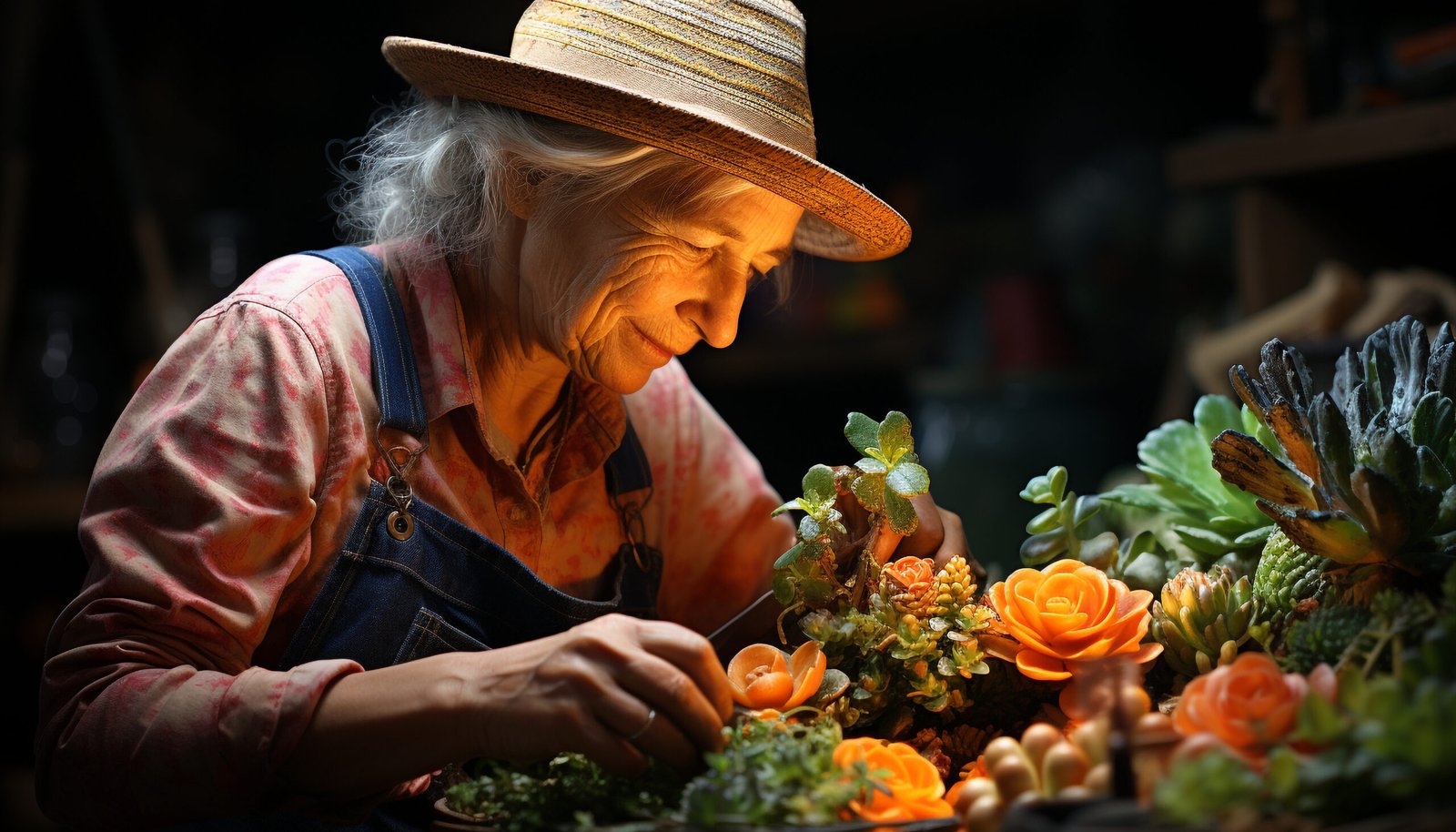If you’ve ever dreamed of having a beautiful garden but felt it was too late to start, you’re not alone. Many people think that gardening is something reserved for the young or the highly energetic. But here’s the truth: Gardening is ageless, and in fact, it can be an incredibly rewarding hobby no matter your age—especially after 60.
Maybe you’ve been thinking about it for a while but are worried about the physical effort, the time commitment, or just where to start. Don’t let those concerns stop you. Gardening is one of the most fulfilling ways to stay active, connect with nature, and create a space that brings you joy and peace. And the good news? It doesn’t have to be complicated or overwhelming.
In this simple guide, we’ll walk you through how to get started with gardening after 60—without any stress. We’ll handle common objections, give you practical tips, and show you how to build a garden that works for you, no matter your energy levels or experience. Let’s dig in!
The First Step: Let Go of Perfection
One of the biggest barriers to starting a garden at any age is the fear that it won’t look “perfect.” You might imagine rows of perfectly symmetrical plants or feel like your garden should look like the ones in glossy magazines. But here’s the thing—gardening isn’t about perfection; it’s about enjoying the process and creating something that’s uniquely yours.
Gardening after 60 is about finding what brings you joy, not trying to keep up with the Joneses. Whether it’s a few pots on the porch or a small raised-bed garden, your space can be beautiful and fulfilling without the pressure of perfection. Embrace the process and let go of those expectations.
Objection #1: “I’m Not Physically Up to It”
You may be thinking, “Gardening sounds great, but I don’t have the energy or strength I once had.”
Here’s the good news: You don’t need to be super strong or have hours to spend every day in the garden. There are plenty of ways to make gardening easier and more enjoyable, even with limited physical ability.
Tip 1: Start Small
Instead of overwhelming yourself with a large garden, start with a small space. Think container gardens, raised beds, or even a few well-placed pots. These options require less bending and stretching, which can help reduce physical strain.
Tip 2: Tools Matter
Use ergonomic tools designed to minimize effort. There are specially designed garden tools with padded grips, extended handles, and lightweight frames that can make tasks like digging, weeding, and pruning much easier on your body.
Tip 3: Raised Beds and Vertical Gardens
Raised beds bring the garden to your level, so you won’t need to crouch down or kneel to tend your plants. Vertical gardens or trellises also allow you to grow climbing plants like tomatoes or cucumbers without needing a lot of space or bending over.
Objection #2: “I Don’t Have Time for Gardening”
You might be thinking, “I’m too busy or my schedule is too packed to dedicate time to a garden.”
This is a valid concern, especially when it feels like there’s never enough time in the day. But here’s a little secret: Gardening can be as time-consuming—or as simple—as you want it to be. It’s all about starting small and making gardening a relaxing, low-maintenance hobby.
Tip 1: Choose Low-Maintenance Plants
Some plants, like succulents, herbs, or native plants, require less attention and care. Choose varieties that are well-suited to your climate, and you’ll spend less time watering and fussing over them.
Tip 2: Plan for Simplicity
Instead of a sprawling garden, consider a few containers with a mix of colorful flowers or herbs. These require minimal upkeep and can be enjoyed with just a few minutes of attention each day.
Tip 3: Make It Enjoyable
Gardening isn’t a race—it’s about enjoyment. If you only have 15 minutes, that’s perfectly fine. You can water, prune, or admire your plants without feeling like you need to do everything at once.
Objection #3: “I Don’t Know Where to Begin”
Let’s be honest: Starting something new can feel overwhelming. If you’ve never gardened before or it’s been years since you last tended plants, it can be tough to know where to begin.
But here’s the beauty of gardening—it’s a journey, not a destination. And no matter where you start, it’s okay to take baby steps.
Tip 1: Start with Easy-to-Grow Plants
If you’re new to gardening or haven’t done it in years, start with plants that are easy to care for. Herbs like basil, rosemary, and thyme are perfect for beginners. Flowers like marigolds, sunflowers, and geraniums are also low-maintenance and give you instant color.
Tip 2: Learn as You Go
Don’t worry about knowing everything up front. Start by reading a gardening book, watching online tutorials, or even visiting a local garden center to talk to experts. Over time, you’ll learn what works best for your climate, your space, and your lifestyle.
Tip 3: Ask for Help
If you have a friend or family member who’s an experienced gardener, don’t be afraid to ask for advice. Many local communities also offer gardening clubs or senior gardening groups that can offer guidance and support.
The Joy of Gardening After 60
Gardening isn’t just about creating a beautiful space—it’s also about the personal satisfaction that comes from nurturing life and watching something grow. In fact, research has shown that gardening can help reduce stress, improve mood, and even boost overall mental health.
Whether you want to grow your own food, create a peaceful retreat in your backyard, or simply enjoy the process of planting and tending, gardening after 60 can enrich your life in ways you never imagined. Plus, there’s no better feeling than picking fresh tomatoes from your own garden or watching your flowers bloom season after season.
So, take a deep breath, gather a few tools, and start small. Gardening after 60 is your chance to explore a new hobby, create beauty, and enjoy a sense of accomplishment.
Don’t wait for the “perfect time”—the perfect time is now.
By tackling common concerns and focusing on practical, simple steps, gardening can become an enjoyable and fulfilling part of your life, no matter your age. Ready to dig in? The garden (and a wealth of possibilities) is waiting for you!
Post sponsored by Amazon Home & Kitchen / Photo courtesy of Freepik







